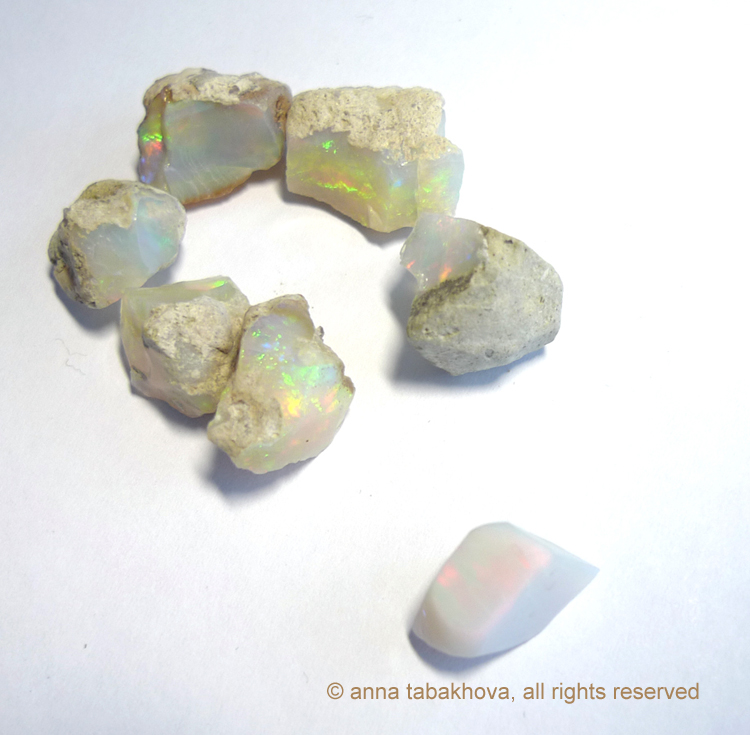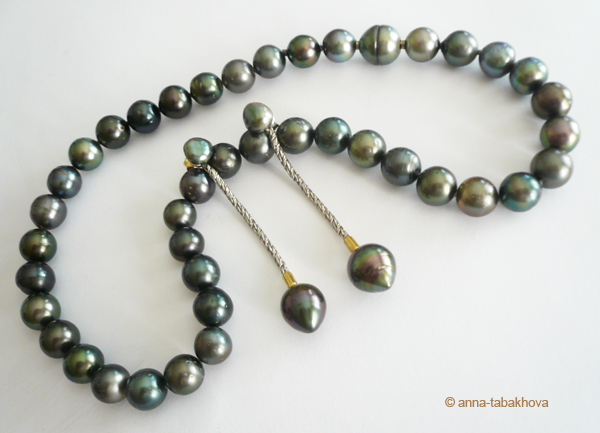Cutting Ethiopian Opals and making jewelry

Cutting an ammolite and making a clasp
Ammolite is composed of nacre of fossilized ammonites on a shale base. This stone is only found in the Rocky mountains in Canada. Here is an ammolite when not broken.
Fourth step is polishing the edges, giving the final shape.
Cutting a drusy stone and making a clasp
At the beginning was the rough stone, a cobalto calcite one, a drusy stone of natural pink color
La perle de culture
Paul Claudel dit d’elle :
« Elle ne brille pas, elle ne brûle pas, elle touche : fraîche et vivifiante, caresse pour l’oeil, pour l’épiderme et pour l’âme. »
Mais qu’est ce qu’une belle perle ?
CLIQUEZ SUR L’IMAGE POUR VOIR LE DOSSIER COMPLET


